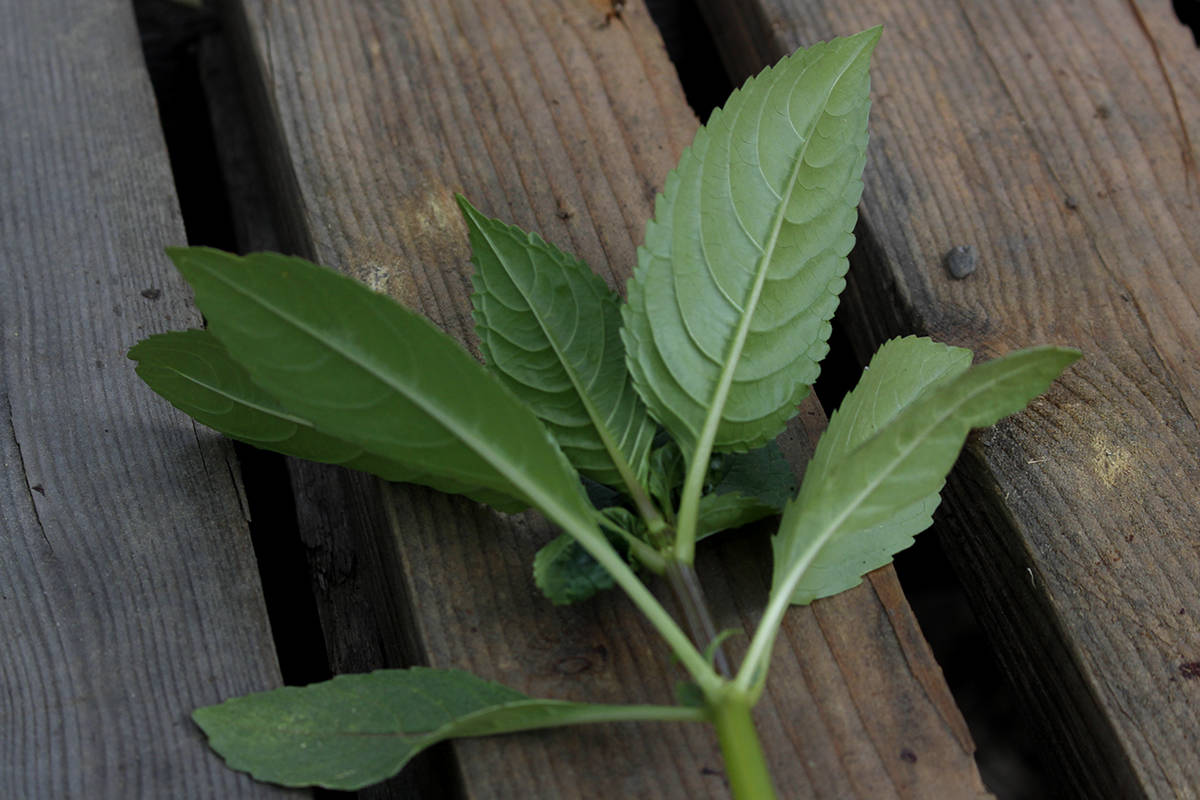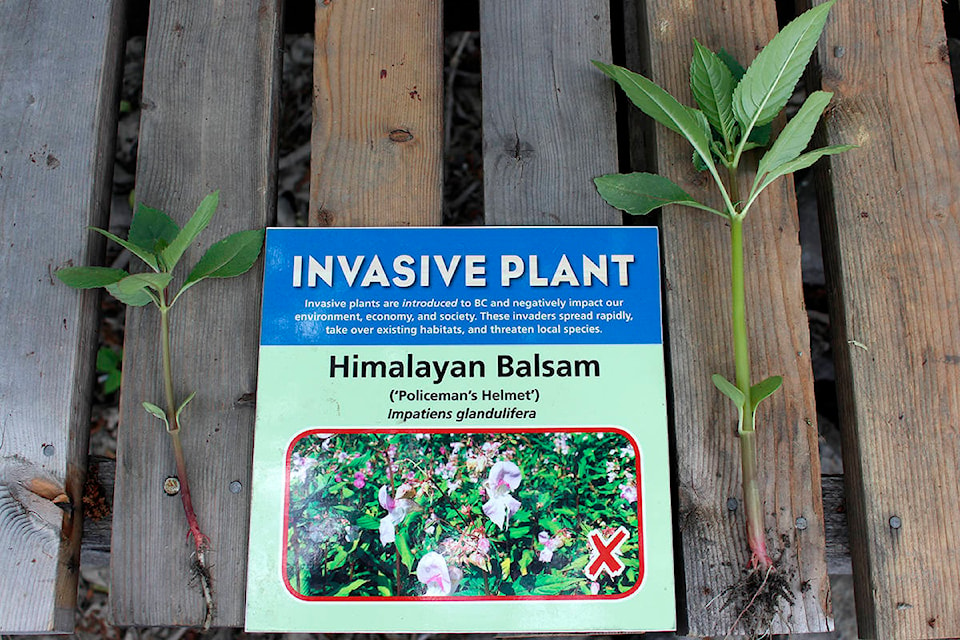Himalayan balsam can cause threats to riverbanks through increased erosion and spread quickly across property lines with help from popping seed explosions as it is most comfortable when popping up in damp areas.
In honour of Invasive Species Action month learn all about the weed and how to deal with it.
Noteworthy for its pink, purple and occasionally white hooded flowers which have earned the species its nickname of ‘policeman’s helmet,’ Himalayan balsam plants were likely first brought to Canada during the early 1900s as an ornamental plant.
However, as a non-native species, the annual plant is able to spread quickly and grow rapidly, dominating local habitats as it does so.
“It can cause stream bank erosion, and it can also invade and cover your garden. There’s lots of reasons why we would like to not have it here in the Columbia Shuswap,” explains Robyn Hooper, an executive director with the Columbia Shuswap Invasive Species Society.
RELATED: Take action against invasive species in the Revelstoke area this month
The plant’s shallow root systems can cause damage to the stream banks where they often grow, causing erosion after the plants die near the end of the season.
Seed pods which pop when touched on mature plants help the spread of the species throughout regions and over property lines. Because Himalayan balsam often grows along water ways, the buoyant seeds are able to float downstream and spread further.
Hooper says the combination of the plant’s efficient reproduction methods as well as non-native advantages make the rapid spread of Himalayan balsam plants in the region possible.
“It does really well because it reproduces quite a number of seeds and spreads really easily, but it also doesn’t have any pests or predators because it’s not from here,” says Hooper. “It can grow quite a bit easier than the native plants can.”
Hooper says the best prevention method for the species is early detection and action, which is made simple by easy identifiers present on the plant, such as the hollow translucent red-tinged stems and whorled green leaves, which often grow in groups of three. Fully grown, the stems can reach up to 3 meters in height.
RELATED: Revelstoke Invasive Species Spotlight: Knotweeds
If Himalayan balsam is found, the plant can be easily pulled in a similar fashion to a garden-weed or mowed for removal. Due to the plants shallow roots, the process can be done without much resistance.
Once removed, plants and roots should be disposed of in landfill garbage, as compost disposal can lead to regrowth through the roots and further spread
Though Hooper says Himalayan balsam is still common in the Revelstoke area, community efforts have made it possible to control the species effectively.
“We’ve definitely seen quite a bit of it around Revelstoke, but what’s great is we have had a lot of community weed pulls, so we’re tackling it on land where we can,” says Hooper. “But we encourage private land owners to help us with the fight, because I think there’s quite a bit still spreading on private land.”
In place of including Himalayan balsam in your garden, the Invasive Species Council of B.C. recommends planting native wild bleeding heart or exotic cardinal flowers to add a similar appearance.
For more information on Himalayan and other invasive species treatment, visit columbiashuswapinvasives.org.

